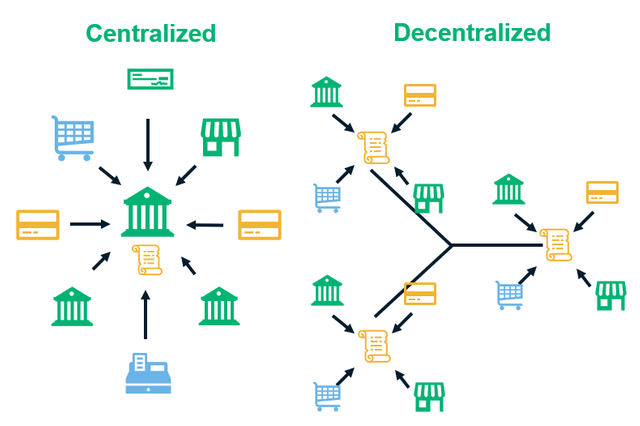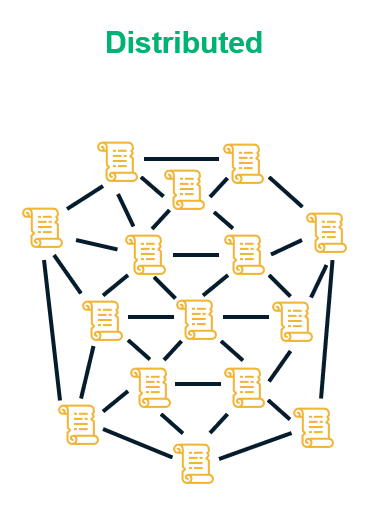Crypto Academy Week 4 Home Work Post for @ besticofinder
Introduction
I want to start by appreciating Steemit for this awesome opportunity it has availed us to learn extensively about Crypto. Aside from the economic benefits it offers. More so, for bringing in well endowed professors of different disciplines. Such as Professor @besticofinder of Sri Lanka, Professor @Gbenga of Nigeria, Professor @yohan2on of Uganda and the two other professors from India, in person of Professor @sapwood and Professor @stream4u. You guys are amazing!
Crypto Academy is one of its kind in the world of crypto movement.
If you ask me....do you feel your crypto IQ is rising every week? I would respond a hundred times ‘ yes, yes, yes’ . Reason being that I never knew anything about crypto before now. But ever since I joined this platform my knowledge about crypto has really improved.
What is Crypto Mining?
Before we consider other tasks under this discussion, I would like to refresh our memory about crypto mining.
Though crypto mining has been around since Bitcoin was first mined in 2009. It has made quite a splash with miners, investors and cyber criminals alike. It has become a popular topic in online forums. We have seen videos and read articles about Bitcoin, Dash, Ethereum and other types of cryptocurrencies. And in those pieces of content, the topic of cryptocurrency mining often comes up.
In a nutshell, cryptocurrency mining is a term that refers to the process of gathering or harnessing cryptocurrency as a reward for work that you complete.
However, one question that often trails my mind whenever Bitcoin is mentioned is this..... why do people crypto mine? For some, they are looking for another source of income while others is about gaining greater financial freedom. Which in a way it’s cool!
Having looked at the background behind crypto, let’s discuss in details and in a more technical sense what crypto mining is all about.
The term crypto mining means gaining cryptocurrencies by solving cryptographic equations through the use of machines called computer. This process involves validating data blocks and adding transaction records to a public record ( ledger) known as a blockchain.
It is the use of computers and cryptographic processes to solve complex functions and record data to a system called the blockchain.
How Cryptocurrency Mining Works
To better understand how crypto mining works, it’s important for us to liken the cryptocurrency market to an alternative traditional banking system that we use globally.
Firstly, we need to understand the difference between centralized and decentralized systems.
The Difference:
(1) Traditional Banks Are Centralized Systems;
In traditional banking there’s a central authority that controls, maintains and updates a centralized record ledger, which is the control point of every transaction. That means every transaction has to go through the central banking system, where it is recorded and verified. It is limited in its transaction power. In a sense that only a small number of organizations (banks) are allowed to directly connect to the centralized banking system.
(2) Cryptocurrencies Use Decentralized, Distributed Systems;
With cryptocurrencies there is no central authority, nor there is a centralized ledger. That’s because cryptocurrencies operate in a decentralized system with a distributed ledger known as blockchain. Unlike the traditional banking system, anybody can be directly connected to and participate in the cryptocurrency system. You can send and receive payments without going through a central bank. That’s why it is called decentralized digital currency.
In addition to being decentralized, cryptocurrency is also a distributed system. This means the record ledger of all transactions is publicly available and stored on lots of different computers. Instead of using a central banking system to verify transactions, cryptocurrency uses cryptographic algorithms to verify transactions, which is where bitcoin miners come in.
Performing the cryptographic calculations for each transaction adds up to a lot of computing work. Miners use their computers to perform cryptographic work required to add new transactions to the ledger. As a bonus to them, they get a small amount of cryptocurrency for themselves.
To enhance your understanding about what I’m saying here, let’s consider the following graphic:
The examples in the graphic above explain the difference between a centralized system and a decentralized one.
In the left half of the graphic is an illustration of a centralized system. The traditional centralized currency system in the U. S operates through the use of computers. networks and technologies that are owned, operated and maintained by financial institutions. So whenever you send money to a family member or friend, that transaction goes through your bank (a centralized system).
A decentralized system on the other hand (as illustrated in the right half of the graphic), operates using a network of a separately owned, operated and maintained devices. They lend their resources to create this decentralized network and share the responsibility of verifying transactions, updating and maintaining redundant versions of the ledger simultaneously.
Here there is no singular centralized authority that maintains a single ledger (like would be in a centralized system.
So when we talk about distribution, what do we mean? Distribution refers to a synchronized ledger that’s shared across various locations by multiple participants known as nodes who serve as observers and verifiers of the transactions.
As illustrated here:
A distributed network in terms of ledger management and update responsibilities.
Difficulties/Challenges Militating Against Cryptocurrency Mining
Someone once asked, if Cryptocurrency is so simple and interesting, why doesn’t everyone do it?
Well, while everyone might want to take advantage of cryptocurrency mining, the fact is that it is not for everyone. Inspite of its economic gains and benefits, there are still some persons who can’t just do it.
The following are the difficulties/challenges associated with Cryptocurrency Mining.
Crypto Mining is Resource-intensive:
Cryptocurrency mining nowadays requires a lot of resources both in terms of computing power and electricity. Why because crypto mining requires a lot of computing power to generate new guesses continually. If one tends to be successful , then not only do you generate new Bitcoin but also get to update the blockchain by adding information to the end of the ledger.Crypto mining is expensive:
Not only do you have to worry about having enough processing power and electricity to power your operation but you also to keep in mind the costs associated with such a massive initiative.
If you want to have even a slight chance beating other cryptocurrency miners to the punch then you need to have the tech and processing capacity to compete at their level.The ROI Ain’t What it Used to be:
While it’s true that some people have been able to make money by mining cryptocurrencies, the same can’t be said for everyone. And the more that goes on and the more people that get involved, the decreasing return on investment that crypto miners could expect to receive.
Let’s consider Bitcoin as an example. Approximately every four years, Bitcoin experiences an event known as a halving. What this means is that the number of Bitcoin that people would receive as a reward for every blockchain block mined would reduce by half. So when people first started mining Bitcoins back in 2009, they’d receive 50 BTCs per block. As of the last halving, which took place in May 11, 2020, that rate has since reduced 6.25 BTC per block.Another challenge that miners face is that cryptocurrency mining is not feasible or prohibited in one’s geographical location. It is not legal in some areas. In some places it is. Governments globally have different viewpoints of cryptocurrencies in terms of crypto mining. Likely some governments at different geographical locations even prohibit investing in or using cryptocurrencies as payment methods. Especially in my country Nigeria, it is absolutely prohibited and banned. It is that serious!
My Final Thoughts on Cryptocurrency Mining
Cryptocurrency mining is an interesting alternative to the traditional centralized systems that currently operate throughout the world.
However, it is very tasking in terms of computer and power resources and is not feasible for many users as a result.

